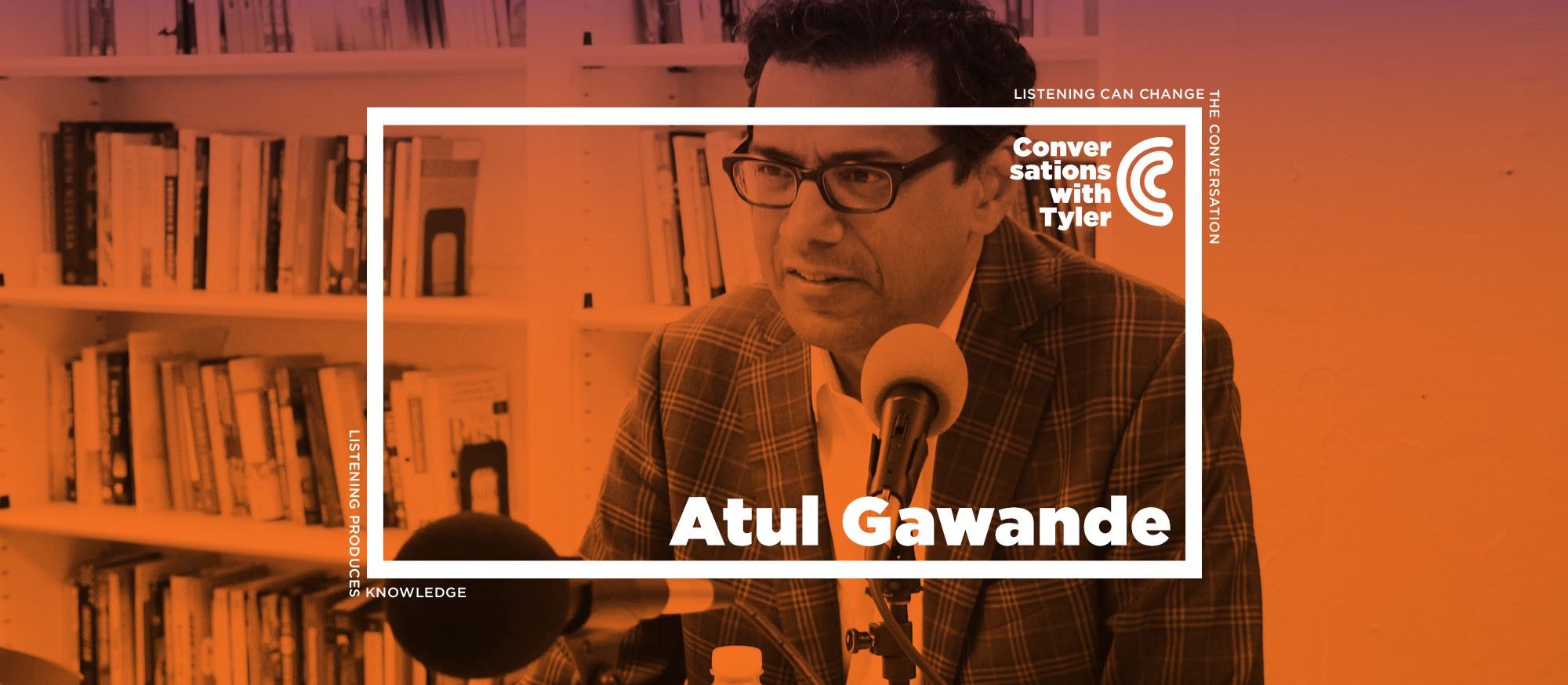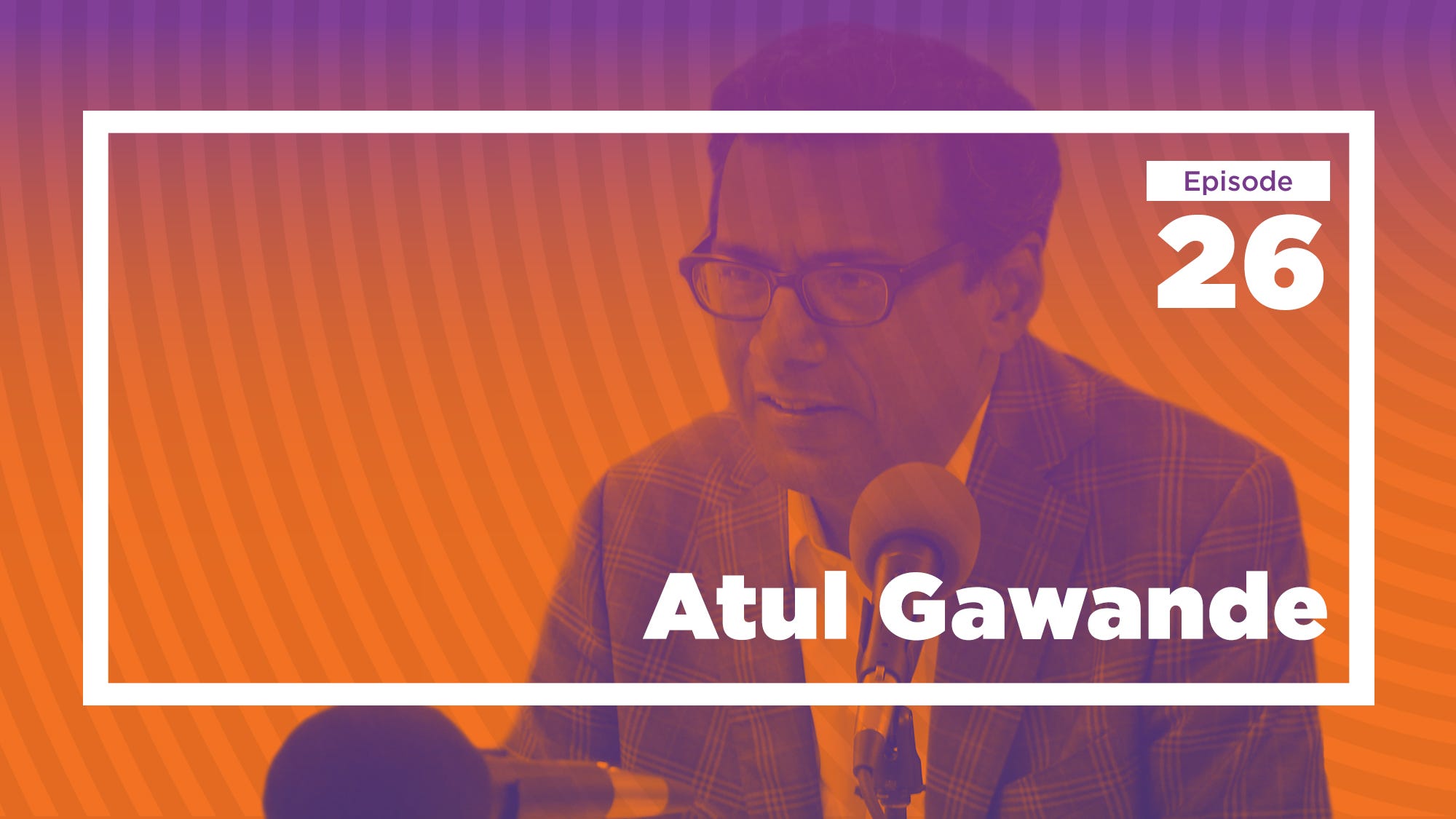When we don’t ask and don’t know how to ask what those priorities are, the treatment is often mismatched with those priorities, and that’s where you get suffering, and that’s where you get lots of hot air from doctors, and you have total misalignment. When you are able to elicit those goals and then align the care with it, you have massively better outcomes, both for quantity and quality of life.
COWEN: Do you ever worry that doctors become corrupted by their own authority? Not corrupted in the sense of taking bribes, but they have such authority, people look up to them. They say “Take off your clothes, sit on the table.” People do it—people are in the mode of obeying.
A lot of patients, frankly, are probably a pain, so doctors in a sense can manipulate patients to make each interaction easier because they’re such high-status figures. And then doctors fall into this mode of being used to doing that with people in general. What do you think are the main psychological dangers of corruption that can stem from being a doctor and having such high status? Control over life or death. “You can cure people, the gods cannot.” That’s what Sir Thomas Browne said, right?
GAWANDE: [laughs] I think that the health system of every country is a demonstration of our corruptibility. Kenneth Arrow’s 1960s essay on asymmetry of information used healthcare as its prominent example that sellers are more powerful than buyers when we not only control the decision set, we control the option set. And the opportunity and ability of the individual to understand all of those, to be able to make choices among them, is hindered especially when you are sick.
The most powerful tool that a clinician has is their pen, and has the power to order medications to test, to doing an operation. So yes, the power . . . Look, it’s an unusual profession in that yes, we can ask you to sit on the table and make yourself the most vulnerable in the most vulnerable way possible—not only to ask you to take off your clothes, but then to actually have permission to cut you open and do what I choose to do inside you. That is a tremendous power.
And the ways in which we see that just the payment incentives alone dramatically affect whether my tendency is to give you overtreatment in certain situations and undertreatment in others, is a reflection of our failure to follow through on being able to deal with the variability in that, and how we use that asymmetry of information.
On liberalizing the FDA
COWEN: A lot of critics have charged that to get a new drug through the FDA, it takes too many years and too much money, and that somehow the process should be liberalized. Do you agree or disagree?
GAWANDE: I generally disagree. It’s a trade-off in values at some basic level. In the 1950s, we had no real FDA, and you had the opportunity to put out, to innovate in all kinds of ways, and that innovation capability gave us modern cardiac surgery and gave us steroids and antibiotics, but it also gave us frontal lobotomies, and it gave us the Tuskegee experiment and a variety of other things.
The process that we have regulation around both the ethics of what we’re doing and that we have some safety process along the way is totally appropriate. I think a lot of lessons about when the HIV community became involved in the FDA process to drive approaches that smoothed and sped up the decision-making process, and also got the public enough involved to be able to say . . . That community said, “Look, there are places where we’re willing to take greater risks for the sake of speed.”
People are trying to treat the FDA process as a technical issue. When what it is, is it’s an issue about what are the risks we are genuinely willing to take, and what are the risks that we’re not?
COWEN: But the bigger risks seem pretty invisible. Some drug you’ve never heard of—it doesn’t even exist yet—you never get it and you die. That’s not very salient to people. It seems, insofar as the public judges the risk, maybe they’re getting it wrong.
GAWANDE: No, that’s right. The way to think about it, though, is that we have a certain speed with which we have accelerated passage through the FDA. We are doing surveillance afterwards, and then finding that the approval process leads to drugs being withdrawn from the market. That is a decision, that we have decided to accept acceleration, especially of drugs that’ll have to be tested on small numbers of people, and then we’ll monitor afterwards to be able to catch problems after they happen. And some of the disasters that have occurred, like Vioxx and others, where there were substantial cardiac affects happening to many, many thousands of people, there’s been a backlash against that.
On the whole though, I think we have decided to trade . . . letting lots more drugs through and a little bit more quick process, but then try to have surveillance afterwards. Of course, one of the results is, we’re not investing very much in that surveillance.
The worst of all worlds is, speed drugs through and then close our eyes to what harm is being done after the drug has hit the market. And that, of course, is where all of the incentives are from the drug-maker point of view. And then, when the public’s not paying attention, that’s where we start dialing back. And that’s one of my fears in the current regime is that, “OK, fine, we speed up the approval process, but then gut the ability of the FDA to hold the medical community to having surveillance of what happens and then pull the drugs on the market that are actually causing harm.”
COWEN: New surgical procedures, should the FDA have a greater ability to regulate them than it has right now?
GAWANDE: Yes. One of the really interesting things is that basically surgical procedures are not easily protocolized.
COWEN: Correct.
GAWANDE: So we’re still in that sort of craft world in surgery. So I, as a surgeon, can kind of do whatever operation I deem appropriate. And the only thing that’s regulating me is the threat of being sued for malpractice and colleagues saying that what I did was way outside the standard of care and made absolutely no sense.
The challenge is that, in a certain sense, operations are crafted for each person, and so the devices you use and the drugs you use are highly regulated, but the procedures you use are not. I don’t think it makes sense for the FDA to regulate the procedure. However, I do think it makes sense for the organization to be held accountable for tracking what kinds of outcomes people have for procedures.
So the part that gets to me is that, for a given procedure, proven procedures, we have at least 250 percent variability in the outcomes, depending on the institution you go to. It is primarily a function of the institution, not the individual surgeon. And we have no tracking, virtually no tracking, certainly no transparency, about what those outcomes are and what the factors are going into them. And I think that’s where we need to have much more information.
On things under- and overrated
COWEN: There’s a middle segment of all of these conversations, overrated versus underrated. You’re free to pass on any of these, of course. But I’ll toss out a few things, and you tell me what you think. Underrated or overrated?
Stevie Wonder.
GAWANDE: Hmmm. I think he’s now become underrated. He might have been overrated at one point, but now he is significantly underrated.
COWEN: And what’s his best album?
GAWANDE: Oh gosh. [laughs] I’m going to have to pass on that because I lived in the world of singles. “Sir Duke” was my favorite song.
COWEN: Songs in the Key of Life?
GAWANDE: Yeah. What I might go to is going back to that era. So Songs in the Key of Life, I would say, bring that back.
COWEN: Michael Crichton: doctor, Harvard, writer. What do you think?
GAWANDE: Where is he now? I would say he might be . . . I think he’d been overrated. I say this as someone who was totally inspired by Michael Crichton. The fact that he graduated from medical school, and then a year into his residency, left to do everything from directing movies like Coma to writing The Great Train Robbery, and then onward to Jurassic Park. But as a kind of influence on medical writing and on writing writ large, I think that his power is waning. His power is now . . . Well now, see, I’m switching from over to under . . .
COWEN: Now you’re sounding like underrated. Sphere is my favorite book of his. He was also a brilliant art collector. He bought a lot of Jasper Johns before other people . . .
GAWANDE: And I just realized, the critical way he’s underrated was in creating programs like ER, which showed how it really has become now that the medical procedural, just like the criminal procedural, is now a mainstay of television, and I think ER created that. And that was a brainchild of Michael Crichton. So yeah, I’ve reverted.
COWEN: The idea of nudge.
GAWANDE: I think overrated.
COWEN: Why?
GAWANDE: I think that there are important insights in nudge units and in that research capacity, but when you step back and say, “What are the biggest problems in clinical behavior and delivery of healthcare?” the nudges are focused on small solutions that have not demonstrated capacity for major scale.
The kind of nudge capability is something we’ve built into the stuff we’ve done, whether it’s checklists or coaching, but it’s been only one. We’ve had to add other tools. You could not get to massive reductions in deaths in surgery or childbirth or massive improvements in end-of-life outcomes based on just those behavioral science insights alone. We’ve had to move to organizational insights and to piece together multiple kinds of layers of understanding in order to drive high-volume change in healthcare delivery.
COWEN: Wearables.
GAWANDE: Wearables. I think underrated.
COWEN: Why?
GAWANDE: Wearables right now don’t do terribly much. What we see right now are wearables that might, say, track your heart rate and catch variations in your EKG and so on. What the problem is, is that the wearables have not been able to be integrated into the practice of medicine in a really critical way. Right now, the way a wearable is used, whether it’s for tracking cardiac events or your mental state or other things like that, is that then it says, “Notify your doctor.” Or it’s a dump of a ton of data that a clinician is supposed to use and know how to integrate into practice. It hasn’t been able to be used in such a way they’re actually demonstrating major improvements in people’s outcomes.
However, we are entering this phase where we are now starting to be able to track—take your genomic data, take your laboratory data, take your imaging scans you’ve done—couple it with information from wearables, like how you’re doing over time, whether you’re getting the medications you should be getting.
Our team here is actually deploying a version of a wearable, which is turning on the sensors in your phone to track patients after surgery, to see whether we can define how long their recovery pathway is, how long before they are back in their normal sleep habits, or back mobilized and moving around much more. I think that ability to have knowledge of the well-being of people that goes beyond whether you had a complication or a death. Success of what we do for people can be enormously improved followed by wearables. And then that creates these incredible learning loops, where we can maximize those right-now-invisible indications of the outcomes of care.
So I think the wearables are being used on the diagnostic side, where it’s semi-powerful but not critical, as part of how you’re doing in your care and whether we’re helping you achieve the goals—very powerful.
COWEN: Karl Knausgård?
GAWANDE: Knausgård. Overrated. I’ve read about half of the trilogy. I’m totally absorbed and loved them. But I feel like Elena Ferrante is an example of someone who was doing much the same—deeply mining the territory of somebody over a history of time—but managed to do it by fixing them in a place and a time and a history, and a dramatic change in social conditions, and everything else that took it to this whole another level in my mind.
COWEN: What makes you weep?
GAWANDE: What makes me weep? What invariably makes me weep is when . . . It might be a movie, or it might be seeing someone tell the story of devoting years of time to a problem, or to something they’re trying to do at great pain, but sticking with it and then actually getting to the end. I’m going to give two examples. The movie Bliss, this Australian film based on Peter . . . Oh my gosh, I’m blanking on the Australian writer’s name.
COWEN: Peter Weir?
GAWANDE: No, Peter . . . Did Oscar and Lucinda.
COWEN: Peter Carey!
GAWANDE: Peter Carey. Has this moment where the man is in love with a woman and plants the seeds of a forest. And it takes the next decade or more before she realized this thing he built out of love, and it grew. That’s when she realized that, in fact, he loved her. And that was just extraordinary, and of course made me bawl like a baby.
Then this coming week will be our surgery graduation. And it’s eight people who have given the last decade of their lives to try and to craft and become who they are. And they will tell the story. They each get 15, 20 minutes of time to tell their story of what they have gone through. And they had families, and had family tragedies, and they’ve had things that they’ve missed along the way.
And it always makes me cry because that ability we have to commit ourselves to something larger than ourselves over a long period of time, not knowing whether it will turn out the way you think it will—that is, I think, the most incredible thing that human beings do.
On personal flaws, including as a patient
COWEN: You’ve written about yourself that you are highly indecisive by nature, and you will agonize over many choices. Is there any way in which you feel this—what you describe as your weakness—is actually your strength?
GAWANDE: Yes. I chose surgery, and I wrote in the passage you might be reflecting on that I chose surgery, in part, because I was drawn to the character of people who had that kind of decisiveness, took action when inaction was the worst thing, and then lived with the consequences. Took responsibility for whatever happened, learned from it, and then brought it to the next time.
So I’ve brought to surgery my particular persona, which is to want to have more planning and more deliberation inserted into situations where there doesn’t seem to be time.
And one of the really striking things is, we get this complaint, for example, that using a checklist in surgery, “Well that’s fine, but in emergencies, we don’t have time for that kind of thing.” And we demonstrated that in that situation, taking the one-and-a-half minutes for the very beginning part of it has enormous value. It’s, in fact, the group in whom we have the highest reduction in death are those in which the time is the most pressing. And so I think I’ve flipped my weakness into a strength where I can, but by battling with it to a certain degree.




